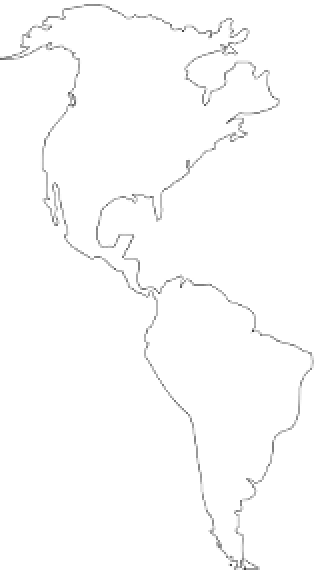Geology Reference
In-Depth Information
Coastal
dunes
Figure 13.14
World distribution of coastal dunes.
Source:
Adapted from Carter
et al.
(1990)
Box 13.2
COASTAL DUNES: NATURE AND OCCURRENCE
Coastal dunes are fashioned by the interplay of wind,
waves, vegetation, and sediment supply (Pye 1990).
Figure 13.15 depicts six basic cases. Rapidly prograd-
ing beach ridge plains with little dune development
form where the beach sand budget is positive and
wind energy is low (Figure 13.15a). Parallel fore-
dune ridges occur under similar circumstances save
that wind energy is higher and sand-trapping vegeta-
tion is present, leading to slower beach progradation
(Figure 13.15b). Irregular 'hummock' dunes with
incipient blowouts and parabolic dunes form on
moderately prograding coasts where the beach-sand
sediment budget is positive, wind energy is moder-
ate, and there is an ineffectual or patchy vegetation
cover (Figure 13.15c). Single foredune ridges, which
grow upwards with no change of shore position, occur
when sand supplied to the beach is delivered to the
dunes and trapped by vegetation (Figure 13.15d).
Slowly migrating parabolic dunes, blowouts, and
salt-scalded vegetation occur behind beaches that
slowly retreat landwards when the sand supplied
to the beach is slightly less than that supplied
to the dunes (Figure 13.15e). Transgressive sand
sheets of low relief form when little or no sand
is supplied to the beach and wind energy is high.
Under these conditions, the beach is rapidly low-
ered and dune vegetation destroyed, which increases
exposure
to
storms
and
initiates
coastal
retreat.

























































































































